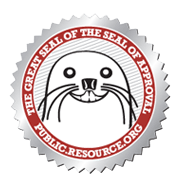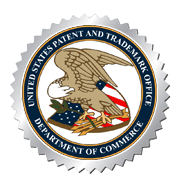The 2009 Report — Sun Nov 8 13:03:17 PST 2009
From 1998: Secrets are incompatible with promoting the useful arts
Promoting ProgressPatents are a bargain. In return for disclosing a useful invention, the inventor is granted a limited monopoly to exploit said invention. But, if the details of the invention, duly filed and disclosed, are buried inside in the bureaucratic labyrinths of Washington, D.C., how is the progress of the useful arts promoted? Patents must be widely distributed or the purpose of the Constitution has not been met. As a pro-constitution nonprofit, we felt that this situation needed to change, and the U.S. patent database was thus released on the Internet in 1994 and 1995 along with Securities and Exchange Commission documents. The situation at the time was so bad that even patent examiners didn't have good access to patents, and we noticed an immediate spike in traffic from uspto.gov as they used our WAIS database to search prior art. |
Third Time is the CharmThe Patent Office, unlike the Securities and Exchange Commission, had a philosophical aversion to distributing “their” database on the Internet for free. Finally, in 1998 after 2 previous attempts to get the office to distribute their data properly, a letter (with a cc to the New York Times) was dispatched to the Vice President suggesting that if the government couldn't commit to doing the right thing within 60 days, others would ursurp their functionality. While the bureaucrats assessed the situation and the clock started ticking, the Internet Multicasting Service went about building a better patent database. On day 59, the Commissioner of Patents went before the American Bar Association to announce that patents and trademarks would become freely available on the Internet. We estimated that this database increased the size of the World Wide Web by 15 percent at the time. |
TRACKBACK—DISSEMINATION OF PATENTS
PAPER TRAIL
James Gleick, Patently Absurd












